The highest temps all summer hit last week, an unwelcome intrusion into fall planting season. Limbing up the big smoke tree a few weeks ago allowed a lot more light into the back garden, setting in motion some deadly domino effects when the mercury rose. Such an unlikely candidate to suffer from too much sun as a large, established echium fried in the heat wave. The ‘Tajinaste’ echium’s leaves had become accustomed to a much gentler sunlight all summer. Along with more sunlight flooding in through the smoke tree canopy, the echium’s neighbor, the big Solanum marginatum I removed, also had provided a measure of cover. (I took cuttings of what I could this morning and removed the echium’s carcass.) An Agave attenuata lost a couple leaves from the searing sun, but no other lasting damage. The potted tropicals reveled in the heat.
Otherwise, the garden is in the same holding pattern bloom-wise as September, with the salvias still in bloom as well as Persicaria amplexicaulis, shown here with a truss of Salvia canariensis.
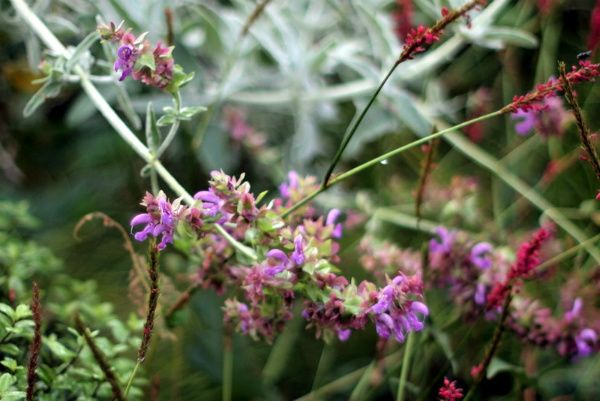
The persicaria again with a Ricinus communis seedling just making size this fall.
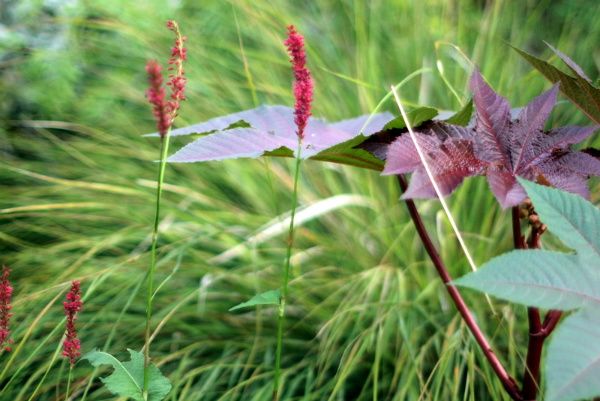
There’s now three big castor bean plants, which is all this little garden can handle. Salvia madrensis in background.

The same ricinus with Rudbeckia triloba, just planted in August, brought home from a visit to Digging Dog Nursery in Mendocino County, California.
(Kathy at Garden Book just attended Digging Dog’s fall plant sale and has some stunning photos of her visit.)
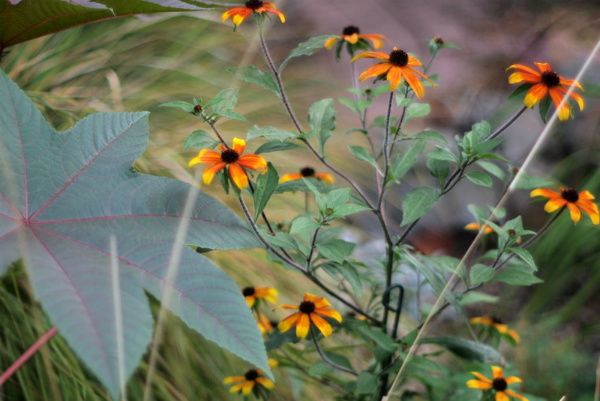
This Selinum wallichianum also comes from my visit to Digging Dog in August.
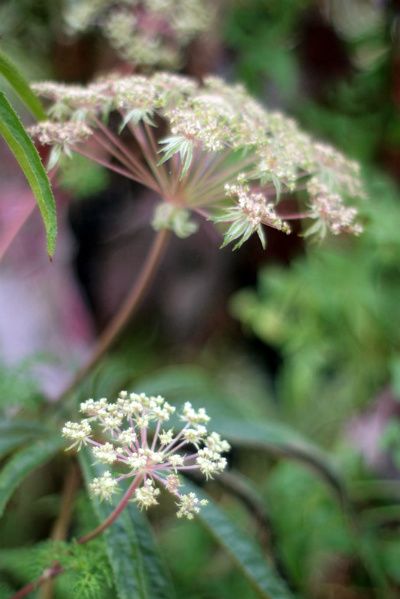
The dahlia ‘Chat Noir’ staggered in the high temps but regained composure, showing some new blooms this morning.

Nerines in the front gravel garden are establishing good clumps (all year-old gifts from Matt Mattus/Growing With Plants)
I believe these are all N. samiensis. A deep orange in bloom this morning.
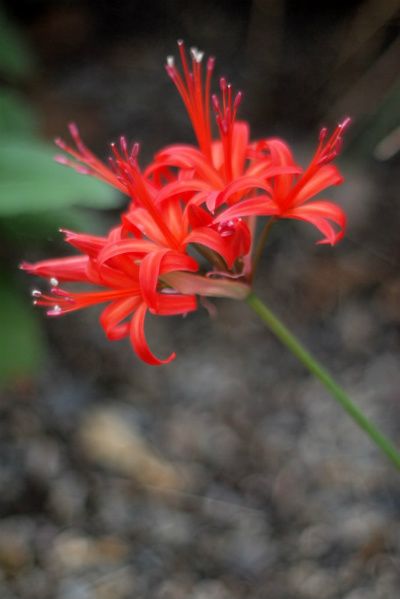
This Orange Clock Vine turned up at a local nursery this fall, Thunbergia gregorii, one I’ve long wanted to grow.
Pure orange blooms, no contrasting dark eye. The thunbergias do amazingly well in Southern California year-round.
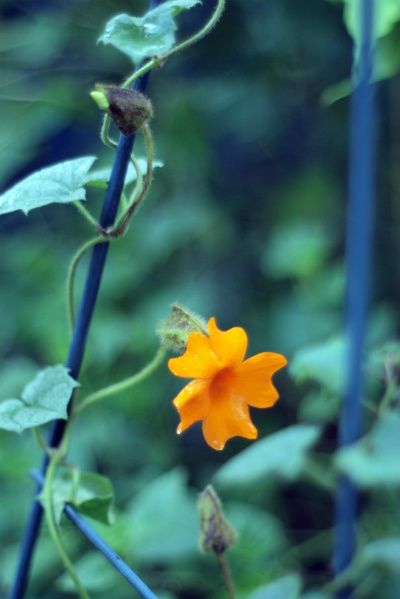
Many succulents are in bloom. And I don’t think Grevillea ‘Superb’ has been without a bloom all summer.
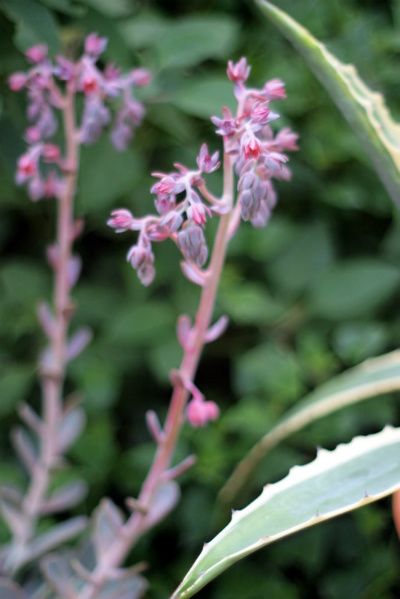
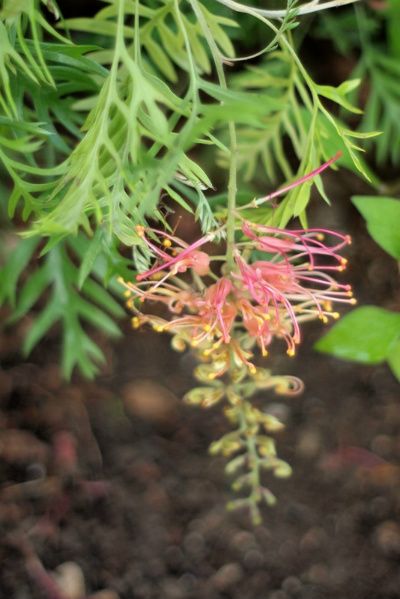
Check out Bloom Day hostess Carol’s Indiana garden at May Dreams Gardens, with links to all the gardens participating this October Bloom Day.

Everybody’s Dahlias are superb this Bloom Day. That ‘Chat Noir’ is stunning.
So lovelyl! Sorry about you heat wave…the weather does tend to strike when we least expect it! I just got some Selinum from Annie’s this summer and can’t wait to see how it does next season…love those blooms…and those purple/red stems…delicious! I adore Rudbeckia triloba…my first one died after setting seed last autumn, so this year I had no blooms…but ample seedlings 🙂
Everything looks beautiful – but the castor bean especially. I’m so intrigued. Are they hard to grow? Are they annuals? They are the ones with the huge star-shaped leaves, right?
That’s some dahlia too!
I surprised you are having your worst heat in October, though the plants you have shown don’t appeat to have been bothered by it.
I love the look of your castor bean. I’ve never been courageous enough to grow one. Love your dahlia! Sorry to hear about your plants wilting in the extra sun. I hope next year they will reward you for more sunlight. Happy GBBD!
Nell Jean, I did see some amazing dahlias this Bloom Day and am taking notes as to varieties. One of the great perks of the Bloom Day posts.
Scott, I think the selinum will love your conditions. I’ve kept mine in a pot so I can cater to its needs.
Jen, the castor bean is mostly grown as an annual but does live through the winter in frost-free gardens like mine. If you get lots of summer heat it should be fine.
Les, most of the established plants did fine. It’s just that I changed the light conditions by pruning the tree just before the heat wave hit. So nice to read you’ve had a great fall.
HolleyG, the castor beans have a big impact for just one plant. Give one a try! Thanks for your well wishes.
Thanks for great commentary and photos. I am planning to use Selinum wallichianum in a southern California coastal garden, but I’ve had some issues in the past with plants that were not particularly climate-appropriate for this Zone 10 garden, 1/2 block from the strand. Can you tell me how your Selinum is doing by now? Have you planted it out, or are you keeping it in its pot? Any information about your experience will be appreciated. Thanks.
Polly, the selinum was planted in a large clay pot and has a flower now. The plant is about 3 feet tall. No leaves at its base, just a few leaves up the stalk, and I think the ferny leaves are what make this one special. For our zone 10, I’d say Orlaya grandiflora is a better umbellifer. Orlaya is an annual but easily reseeds and becomes a permanent feature.
Thanks so much for quick reply. That Orlaya is very nice, esp in a large drift. This little garden doesn’t have room for drifts, but I might try it anyway! Sadly, I think I have to give up on the Selinum. You know how you get your heart set on a particular plant, and envision it as perfect for the space? But if that vision will actually never come to fruition, then it can’t really be shared with anyone outside of my head.